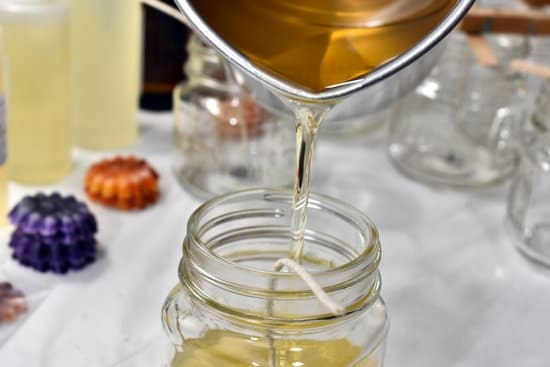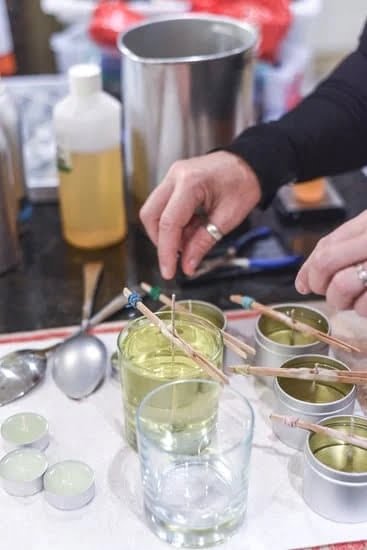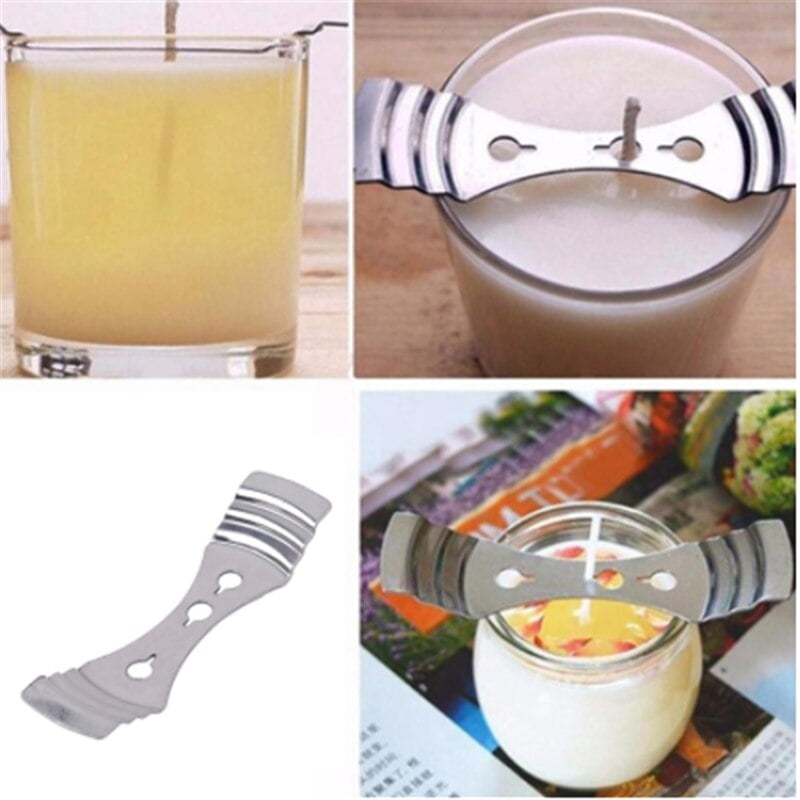Wax Myrtle, a versatile plant known for its fragrant leaves and berries, is also a valuable resource for candle making enthusiasts. The wax produced from Wax Myrtle has long been used in candle making due to its clean-burning properties and pleasant aroma. In this article, we will delve into the history, benefits, characteristics, and techniques of using Wax Myrtle wax for creating exquisite candles.
The use of Wax Myrtle in candle making dates back centuries, with Native American tribes utilizing the plant’s wax for various purposes. Over time, it has gained popularity among modern candle makers who appreciate its natural and eco-friendly qualities. With its sustainable sourcing and unique scent profile, Wax Myrtle has become a sought-after ingredient in the craft of candle making.
One of the key benefits of using Wax Myrtle for candle making is its clean-burning nature, ensuring a longer-lasting and healthier candle experience. Additionally, the wax derived from Wax Myrtle is known for its ability to hold fragrance well, resulting in candles that emit a delightful and consistent aroma when lit. As we explore further into this article, you will discover the endless possibilities and creative potential that Wax Myrtle wax offers to enhance your candle-making endeavors.
The History and Origins of Wax Myrtle as a Candle Making Ingredient
Wax Myrtle, also known as Southern Bayberry, has a rich history dating back to Native American tribes who used its wax for candle making. The wax produced by the Wax Myrtle shrub was valued for its clean-burning properties and pleasant fragrance, making it a popular choice for creating candles. Early settlers in the United States quickly recognized the potential of Wax Myrtle wax as a valuable resource for lighting their homes and workplaces.
To extract the wax from Wax Myrtle berries, Native Americans would boil the berries and then skim off the waxy substance that floated to the surface. This time-consuming process was eventually refined by colonial settlers who developed more efficient methods for extracting and processing the wax. The resulting candles made from Wax Myrtle wax were prized for their high quality and long-lasting burn time.
Today, Wax Myrtle is still highly sought after by candle making enthusiasts for its historical significance and unique properties. Its subtle, earthy fragrance adds a touch of natural elegance to homemade candles, making them perfect for creating a cozy atmosphere in any space. Whether you’re an experienced candle maker or just starting out, incorporating Wax Myrtle wax into your creations can elevate your craft to new heights.
Benefits of Using Wax Myrtle for Candle Making
When it comes to candle making, using natural ingredients like Wax Myrtle can provide numerous benefits that are not only good for the environment but also for the quality of the candles themselves. Wax Myrtle, also known as Southern Bayberry, is a shrub native to the southeastern United States and has been traditionally used for various purposes, including candle-making.
Environmental Benefits
Using Wax Myrtle wax for candle making is an eco-friendly choice due to its natural and sustainable properties. Unlike paraffin wax, which is derived from petroleum, Wax Myrtle wax is a renewable resource that does not contribute to pollution or deforestation. By opting for Wax Myrtle candles, you are choosing a more environmentally friendly option that can help reduce your carbon footprint.
Health Benefits
Another advantage of using Wax Myrtle wax for candle making is its health benefits. Wax Myrtle wax is non-toxic and free from harmful chemicals often found in conventional candles. This means that when you burn Wax Myrtle candles, you can enjoy a clean and pure fragrance without releasing any toxins into the air. For individuals with sensitivities or allergies, Wax Myrtle candles can be a safer alternative to traditional candles.
Aesthetic Benefits
In addition to being environmentally friendly and safe for your health, Wax Myrtle wax offers aesthetic benefits when used in candle making. The wax has a beautiful natural scent reminiscent of bayberries, which adds a unique and pleasant aroma to your homemade candles.
Furthermore, the texture and color of Wax Myrtle wax give candles a rustic and authentic look that enhances their visual appeal. Choosing Wax Myrtle as an ingredient for your candles not only benefits the environment and your health but also adds a touch of nature-inspired beauty to your home decor.
Characteristics of Wax Myrtle Wax for Candle Making
Wax Myrtle wax is a versatile and sustainable ingredient that has been used for candle making for centuries. This type of wax is derived from the berries of the Wax Myrtle shrub, commonly found in North America. One of the key characteristics of Wax Myrtle wax is its clean-burning properties, which make it an excellent choice for candles that produce minimal soot and smoke. Additionally, it has a pleasant aroma that can enhance the ambiance of any space.
In terms of texture, Wax Myrtle wax is known for its smooth and glossy finish when solidified, resulting in candles with a beautiful sheen. It also has a relatively low melting point, making it easy to work with for candle making enthusiasts of all skill levels. The natural color of Wax Myrtle wax ranges from pale yellow to light brown, providing a warm and inviting look to the finished candles.
When compared to traditional paraffin wax, Wax Myrtle wax offers a more environmentally friendly alternative due to its sustainable sourcing and biodegradable nature. This makes it an attractive option for eco-conscious consumers looking to reduce their carbon footprint. In addition, the unique composition of Wax Myrtle wax gives candles a longer burn time and better scent throw, ensuring a more enjoyable and lasting olfactory experience.
| Advantages | Characteristics |
|---|---|
| Clean-burning properties | Smooth and glossy texture |
| Pleasant aroma | Relatively low melting point |
| Sustainable sourcing | Biodegradable nature |
How to Harvest and Prepare Wax Myrtle for Candle Making
Wax Myrtle is a versatile plant that has been used for centuries in candle making. Harvesting and preparing Wax Myrtle for candle making is a rewarding process that allows you to create unique and high-quality candles.
To harvest Wax Myrtle for candle making, it is important to wait until the berries are fully matured, usually in the fall. The berries should be plump and have a waxy coating on them. It’s best to hand-pick the berries to ensure they are of good quality and undamaged. Once harvested, the berries can be dried before further processing.
Preparing Wax Myrtle for candle making involves extracting the wax from the berries. This can be done by boiling the berries in water, then straining out the wax once it rises to the surface. Another method is to gently heat the berries until the wax melts and separates from the pulp. The extracted wax can then be molded into shape or used in candle recipes.
One of the benefits of using Wax Myrtle for candle making is its natural scent that adds a pleasant aroma to candles without the need for artificial fragrances. Additionally, Wax Myrtle wax has a clean burn with minimal soot, making it ideal for environmentally-conscious candle makers. Embracing this traditional ingredient not only connects you with historical practices but also allows you to create beautiful and sustainable candles.
| Advantages | Details |
|---|---|
| Natural Scent | Wax Myrtle adds a pleasant aroma without artificial fragrances |
| Clean Burn | Produces minimal soot for environmentally-friendly candles |
Different Candle Recipes Using Wax Myrtle Wax
Wax Myrtle wax, also known as bayberry wax, has been a popular ingredient in candle making for centuries. This natural wax is derived from the berries of the Wax Myrtle shrub, which grows abundantly in coastal regions. Known for its unique fragrance and clean-burning properties, Wax Myrtle wax is highly sought after by candle makers looking to create high-quality candles.
There are various candle recipes that can be created using Wax Myrtle wax as the main ingredient. Here are some examples of different candle recipes you can try at home:
- Bayberry Candles: A classic recipe that simply uses Wax Myrtle wax and a wick. These candles have a lovely natural scent and a clean burn, perfect for adding a touch of elegance to any room.
- Wax Melts: If you prefer not to work with traditional candles, consider making Wax Myrtle wax melts instead. Simply melt the wax, add your favorite essential oils or fragrances, pour into molds, and let them cool. These melts are great for adding ambiance to any space.
- Soy-Wax Myrtle Blend Candles: Mix Wax Myrtle wax with soy wax for a unique blend that combines the best characteristics of both waxes. The result is a long-lasting candle with a wonderful scent throw.
Experimenting with different candle recipes using Wax Myrtle wax can be a fun and rewarding experience. Whether you’re a beginner or an experienced candle maker, incorporating this natural ingredient into your creations will surely elevate your craft. Next time you’re looking to try something new in your candle making endeavors, don’t forget to include Wax Myrtle wax in your list of must-have ingredients.
Tips and Tricks for Successful Candle Making With Wax Myrtle
Proper Storage of Wax Myrtle
When working with Wax Myrtle for candle making, it is important to store the wax properly to ensure its quality and longevity. Keep the Wax Myrtle wax in a cool, dark place away from direct sunlight and moisture. Proper storage will prevent the wax from melting or becoming rancid, preserving its fragrance and color for future candle making projects.
Experiment With Blending Wax Myrtle With Other Ingredients
One of the exciting aspects of using Wax Myrtle for candle making is its versatility in blending with other ingredients. Try combining Wax Myrtle wax with beeswax, soy wax, or essential oils to create unique fragrances and textures for your candles. Experimenting with different blends will allow you to customize your candles according to your personal preferences and desired outcomes.
Temperature Control During Candle Making
Temperature control is crucial when working with Wax Myrtle wax for candle making. Make sure to melt the wax at the proper temperature range recommended for Wax Myrtle to avoid scorching or burning it. Use a double boiler or a specialized wax melting pot to ensure even heating and prevent overheating. By maintaining optimal temperature conditions throughout the candle making process, you can achieve high-quality candles with a smooth finish and excellent scent throw.
By following these tips and tricks for successful candle making with Wax Myrtle, you can unleash your creativity and create beautiful candles that showcase the unique qualities of this natural ingredient. Whether you are a beginner or an experienced crafter, incorporating Wax Myrtle into your candle making repertoire will elevate your creations and provide a truly aromatic experience for yourself and others.
Conclusion
In conclusion, it is evident that Wax Myrtle is a versatile and unique ingredient that holds a special place in the world of candle making. With its rich history and origins dating back centuries, Wax Myrtle has proven to be an essential element in creating high-quality candles. The benefits of using Wax Myrtle for candle making are numerous, from its clean-burning properties to its pleasing aroma.
Furthermore, the characteristics of Wax Myrtle wax make it stand out among other candle-making materials. Its ability to produce long-lasting candles with a steady burn makes it a favorite among candle enthusiasts. Harvesting and preparing Wax Myrtle for candle making may require some effort, but the end result is well worth it.
For those looking to experiment with new candle recipes, incorporating Wax Myrtle into their creations can open up a world of possibilities. From traditional pillar candles to modern soy wax blends, Wax Myrtle can add a unique touch to any candle-making project.
With proper techniques and methods in place, anyone can enjoy successful results when using Wax Myrtle for candle making. Whether you are a seasoned candle maker or just starting out, giving Wax Myrtle a try is definitely worth considering for your next candle-making endeavor.
Frequently Asked Questions
How Do You Get Wax Out of Wax Myrtle Berries?
To remove wax from wax myrtle berries, you can use a few methods. One common way is to freeze the wax-covered berries, which makes the wax easier to break off. Another method is to gently heat the berries with a hairdryer and then scrape off the softened wax.
What Is the Best Wax to Use for Candle Making?
When it comes to candle making, the best wax to use depends on personal preference and the type of candle being made. Soy wax is popular for its clean burn, while beeswax is known for its natural scent and longer burning time.
What Is the Most Expensive Wax for Candle Making?
The most expensive wax for candle making is generally considered to be beeswax. Beeswax is all-natural and has a sweet honey scent that many people enjoy. Its higher cost can be attributed to the labor-intensive process of harvesting beeswax from honeycomb.

Welcome to my candle making blog! In this blog, I will be sharing my tips and tricks for making candles. I will also be sharing some of my favorite recipes.




